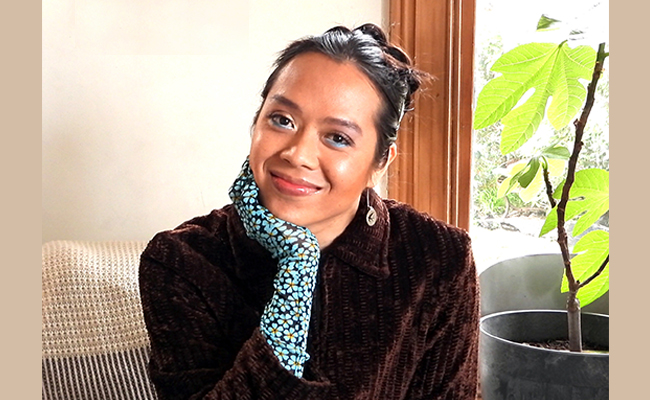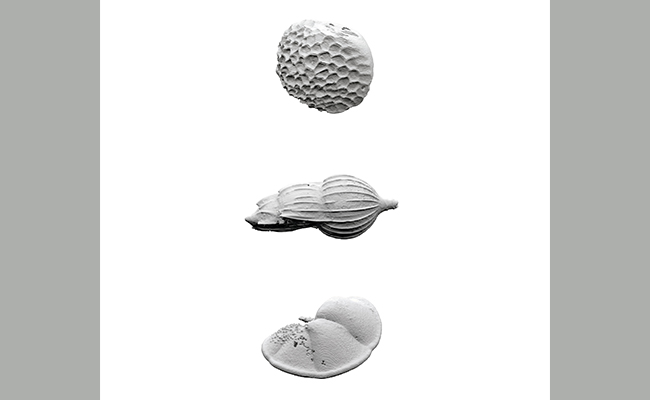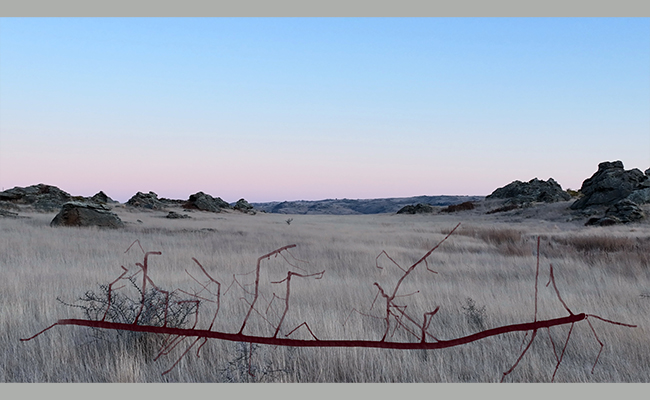Tuesday 7 March 2023 9:49am

Sorawit Songsataya's exhibition Nirun will be hosted at the Hocken Gallery from 18 March to 17 June.
Discovering local sites and working with local materials has enabled multi-media artist Sorawit Songsataya to produce an exhibition which explores their relationship between two homes: Aotearoa and Thailand.
The 2022 Frances Hodgkins Fellow has spent the past year creating limestone sculptures, prints, films, LED animations and 3D images which will feature in Nirun, opening at the University of Otago’s Hocken Collections on 18 March.
Named after the Thai word for eternal, the exhibition teases out the idea of permanency through sculptural form and architectural usage of stones, alongside relationship to places, distance, and people which are in constant motion and transformation.
A series of limestone sculptures referencing architectural elements of an old stone temple in Thailand form the centrepiece of the exhibition.
“I’ve been working with limestone for two years now and this is the first time I’ve used the material in quite a large scale to reflect on elements of home countries,” Songsataya says.
“We often perceive rocks as being inert and lifeless, but they are actually in motion – continents move and shorelines erode. They keep records of time and climatic patterns, and in these new sculptures I added short moments of personal history embedded into the stones.”
Two videos at either end of the gallery further draw out the concept of relationship to place and reference the cyclical nature of environments.
One reel focuses on the kōtuku nesting site on the West Coast, symbolising concepts of birth, nesting and migration. The footage is juxtaposed with 3D animations of scanned foraminifera shells – skeletal remains of microscopic sea organisms that contribute to the formation of limestone.
The second video focuses on rock outcrops from Central Otago paired with digital sound arrangements Songsataya composed.
They also used a 3D scanning technique – photogrammetry – to reconstruct images of the outcrops. The images are a compilation of tiny ‘point cloud’ dots created when the software is calculating the distance from the camera to the surfaces of the rocks.

Digital rendering of scanned foraminifera specimens, 2023 CREDIT Sorawit Songsataya
“It’s become a useful tool in understanding the concept of positionality because how the software calculates the surface of the objects you are photographing is through reading your co-ordinates. So, it becomes about my position and my relationship in space to the objects, which shifts and changes and cannot be fixed because I move and I’m alive.”
After the year-long Fellowship, Songsataya was able to reflect on the opportunities it provided.
One of the highlights was being able to build a cultural understanding of the materials they use.
“Because I work with Oamaru limestone, it has been a question from the beginning – as a guest or a visitor, how do I approach working with earth in a culturally sensitive way? Because the stones are part of the land, and land or whenua as we know, has significant cultural connections and meanings for Māori.
“The fellowship allowed time and space for me to begin to build a connection and relationship with mana whenua from three local rūnaka: Te Rūnanga o Ōtākou, Kāti Huirapa Rūnaka ki Puketeraki, Te Rūnanga o Moeraki; seeking permission to work with the stone and film in central Otago, share something in return, and gain practical skills and historical knowledge of the area.
“These cultural steps and relationship building take time. You can only begin to approach that when you have the length of time that the fellowship provides.”
On a practical level, they appreciated being afforded the time to learn new skills of photogrammetry, polarised light microscope imaging of rock specimens, digital sound production, and to connect with academic researchers, particularly from Department of Geology, to gain a deeper understanding of geological and geographical materials.

Shoulders of Giants (still), 2023. Single-channel HD video with sound, CREDIT Sorawit Songsataya.
Robyn Notman, Head Curator of Hocken’s Pictorial Collections, says working with the Fellows is always exciting and their exhibitions are a highlight of the annual programme.
“I’ve always admired Sorawit’s exquisite use of materials and the variety of processes they use to make their work. Their art is conceptually based and ultimately concerned with the interconnectedness between human beings and the world and the dynamic of this relationship across time and place,” she says.
Hope Wilson, Curator Art in the Pictorial Collections at Hocken, says it is a privilege to host Nirun at the Hocken Gallery.
“It’s very special to see the way Nirun is so embedded in and shaped by Songsataya’s experiences in Te Waipounamu over the course of Fellowship and I’m really looking forward to sharing this exhibition over the coming months,” she says.
Visitors can expect to see aesthetically beautiful and intriguing work offering layers of meaning and engagement.
A publication designed by the artist, featuring contributions from multiple writers offering insights into the ideas informing the artist’s practice and reflecting on their work, has also been produced with the Hocken Collections.
Exhibition details:
Nirun is on from 18 March to 17 June 2023, Tuesday to Saturday 10am to 3pm, at the Hocken Gallery, 90 Anzac Ave, Ōtepoti Dunedin, phone 03 479 8868 www.otago.ac.nz/hocken
